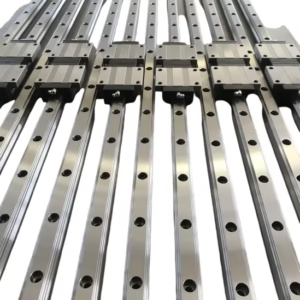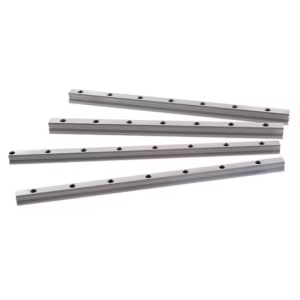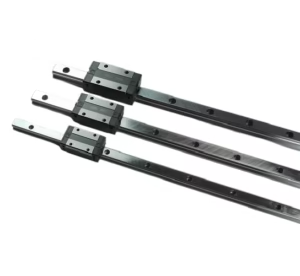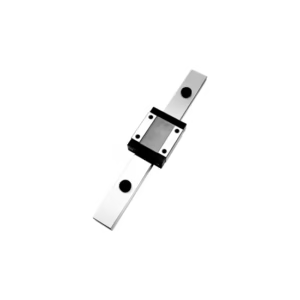Linear bearing blocks are essential components in modern machinery, enabling precise, smooth, and low-friction linear motion. Used in CNC machines, 3D printers, automation systems, robotics, and laboratory equipment, linear bearing blocks provide stability, load distribution, and high accuracy in linear motion applications.
This guide explores the components, types, mechanics, materials, advantages, applications, installation, maintenance, and troubleshooting of linear bearing blocks. By understanding these elements, engineers, technicians, and enthusiasts can optimize the performance of linear motion systems and extend their operational life.
Table of Contents
What Is a Linear Bearing Block?
Components of a Linear Bearing Block
Types of Linear Bearing Blocks
Design Principles and Mechanics
Materials Used in Linear Bearing Blocks
Advantages of Linear Bearing Blocks
Applications Across Industries
Selection Criteria
Installation and Alignment
Maintenance and Lubrication
Common Issues and Troubleshooting
Innovations and Future Trends
Frequently Asked Questions
Conclusion
1. What Is a Linear Bearing Block?
A linear bearing block, also called a linear guide block or linear slide block, is a mechanical component that allows smooth, precise movement along a linear guide rail. It typically contains rolling elements, such as balls or rollers, which reduce friction between the block and rail.
Linear bearing blocks are critical in applications where accuracy, repeatability, and reliability are required. They are widely used in both heavy industrial machinery and compact precision instruments.
2. Components of a Linear Bearing Block
A typical linear bearing block consists of several key components:
2.1 Housing
The housing, usually made of steel or aluminum, holds the internal components and provides structural support. It is precision-machined for exact fit with the guide rail.
2.2 Rolling Elements
These are usually ball bearings or cylindrical rollers that circulate within the block, providing low-friction movement and even load distribution.
2.3 Ball Circulation System
Ball circulation channels guide the balls within the block, ensuring continuous motion and preventing jamming.
2.4 End Caps
End caps prevent the balls from falling out and help redirect the balls for recirculation within the block.
2.5 Lubrication Ports
Many blocks feature lubrication ports or grooves for oil or grease, reducing friction and wear and extending the block’s lifespan.
3. Types of Linear Bearing Blocks
Linear bearing blocks come in various designs to meet specific performance requirements:
3.1 Profile Rail Blocks
Design: Rectangular or square housing with recirculating ball system.
Use: CNC machines, automation, and precision machinery.
Advantages: High load capacity, rigidity, and accuracy.
3.2 Round Shaft Blocks
Design: Circular guide rails with cylindrical blocks.
Use: Light-load and small-scale machinery.
Advantages: Compact design, easy installation.
3.3 Miniature Blocks
Design: Small-scale blocks for limited space.
Use: Laboratory instruments, small robotics, 3D printers.
Advantages: High precision in compact form factor.
3.4 Cross-Roller Linear Blocks
Design: Roller bearings arranged perpendicularly to handle multi-directional loads.
Use: Robotics, precision rotary tables.
Advantages: Handles axial, radial, and moment loads efficiently.
4. Design Principles and Mechanics
4.1 Recirculation Mechanism
Linear bearing blocks typically use a recirculating ball system. Balls travel along channels within the block and are returned through end caps or circulation pathways, providing continuous low-friction motion.
4.2 Load Distribution
Properly designed linear bearing blocks distribute loads evenly across the rail. This prevents localized wear and ensures long-lasting, precise motion.
4.3 Friction Reduction
Rolling elements drastically reduce friction compared to sliding systems, enabling smoother motion, faster operation, and lower energy consumption.
4.4 Rigidity and Accuracy
Profiled blocks increase rigidity and reduce deflection, essential for high-precision applications such as CNC machining, automation, and medical instruments.
5. Materials Used in Linear Bearing Blocks
Material choice affects performance, wear resistance, and longevity.
5.1 Steel
High strength and durability
Heat-treated for hardness and wear resistance
Common in industrial applications
5.2 Stainless Steel
Corrosion-resistant, suitable for humid, wet, or chemical environments
Often used in food, pharmaceutical, and medical applications
5.3 Aluminum
Lightweight and corrosion-resistant
Used in aerospace or portable machinery
5.4 Plastics and Polymers
Used for cages, seals, and low-friction components
Reduce noise and allow cleanroom compatibility
6. Advantages of Linear Bearing Blocks
Linear bearing blocks offer many benefits:
Precision: Maintains accurate linear motion.
Low Friction: Smooth motion with minimal wear.
High Load Capacity: Handles axial, radial, and moment loads efficiently.
Durability: Long lifespan with proper maintenance.
Versatility: Adaptable to various machines and industrial processes.
Noise Reduction: Rolling elements reduce operational noise.
7. Applications Across Industries
7.1 CNC Machinery
Linear bearing blocks guide tools, spindles, and tables for high-precision cutting and milling.
7.2 3D Printing
Provide smooth movement of print heads and build plates, ensuring accurate layer deposition.
7.3 Robotics
Used in robotic arms and automated assembly lines for accurate, repeatable linear motion.
7.4 Automation and Packaging
Critical in pick-and-place machines, conveyors, and automated packaging systems.
7.5 Medical Devices
Supports motion in imaging equipment, surgical robots, and laboratory instruments.
7.6 Aerospace
Applied in flight simulators, satellite positioning, and aerospace manufacturing tools.
8. Selection Criteria
When selecting a linear bearing block:
Load Capacity: Consider both dynamic and static loads.
Precision: Look at tolerance, smoothness, and repeatability.
Speed: High-speed applications require optimized bearing designs.
Environmental Conditions: Consider temperature, humidity, and contaminants.
Size and Weight Constraints: Choose blocks compatible with space limitations.
Maintenance: Some blocks require more frequent lubrication than others.
9. Installation and Alignment
Proper installation ensures optimal performance:
9.1 Surface Preparation
Mounting surfaces must be flat, clean, and rigid.
9.2 Alignment
Rails must be parallel and straight. Misalignment leads to uneven wear and decreased accuracy.
9.3 Fastening
Use correct torque specifications; over-tightening can distort the block or rail.
9.4 Testing
Check smooth movement under load before operational use.
10. Maintenance and Lubrication
Regular maintenance prolongs operational life:
Cleaning: Remove dust, debris, and contaminants.
Lubrication: Apply compatible grease or oil.
Inspection: Monitor for wear, corrosion, or damage.
Replacement: Replace worn components promptly.
11. Common Issues and Troubleshooting
Common problems include:
Noise or Vibration: Often caused by misalignment or insufficient lubrication.
Sticking or Jamming: Caused by dirt, debris, or damaged balls.
Excessive Wear: Results from overload or contamination.
Corrosion: Occurs in humid, wet, or chemically aggressive environments.
12. Innovations and Future Trends
High-Speed Blocks: Optimized for ultra-fast automation systems.
Compact Designs: Smaller blocks with maintained load capacity.
Integrated Sensors: Load monitoring and predictive maintenance.
Advanced Materials: Coatings and plastics for reduced friction and improved durability.
13. Frequently Asked Questions
Q1: What is the difference between a linear bearing block and a linear guide rail?
A1: The block provides the moving carriage, while the rail is the stationary guide. Together, they enable smooth linear motion.
Q2: Can linear bearing blocks be used outdoors?
A2: Stainless steel or coated blocks are suitable for outdoor and humid conditions.
Q3: How often should linear bearing blocks be lubricated?
A3: Depending on usage, lubrication may be needed weekly, monthly, or as recommended by the manufacturer.
Q4: What is the typical lifespan of a linear bearing block?
A4: With proper installation, alignment, and maintenance, blocks can last many years, even in demanding industrial applications.
14. Conclusion
Linear bearing blocks are critical in providing precise, low-friction, and reliable linear motion across a wide range of applications. With careful selection, correct installation, and routine maintenance, they can significantly enhance the performance and longevity of machinery in CNC machining, robotics, automation, 3D printing, medical devices, and aerospace systems.





